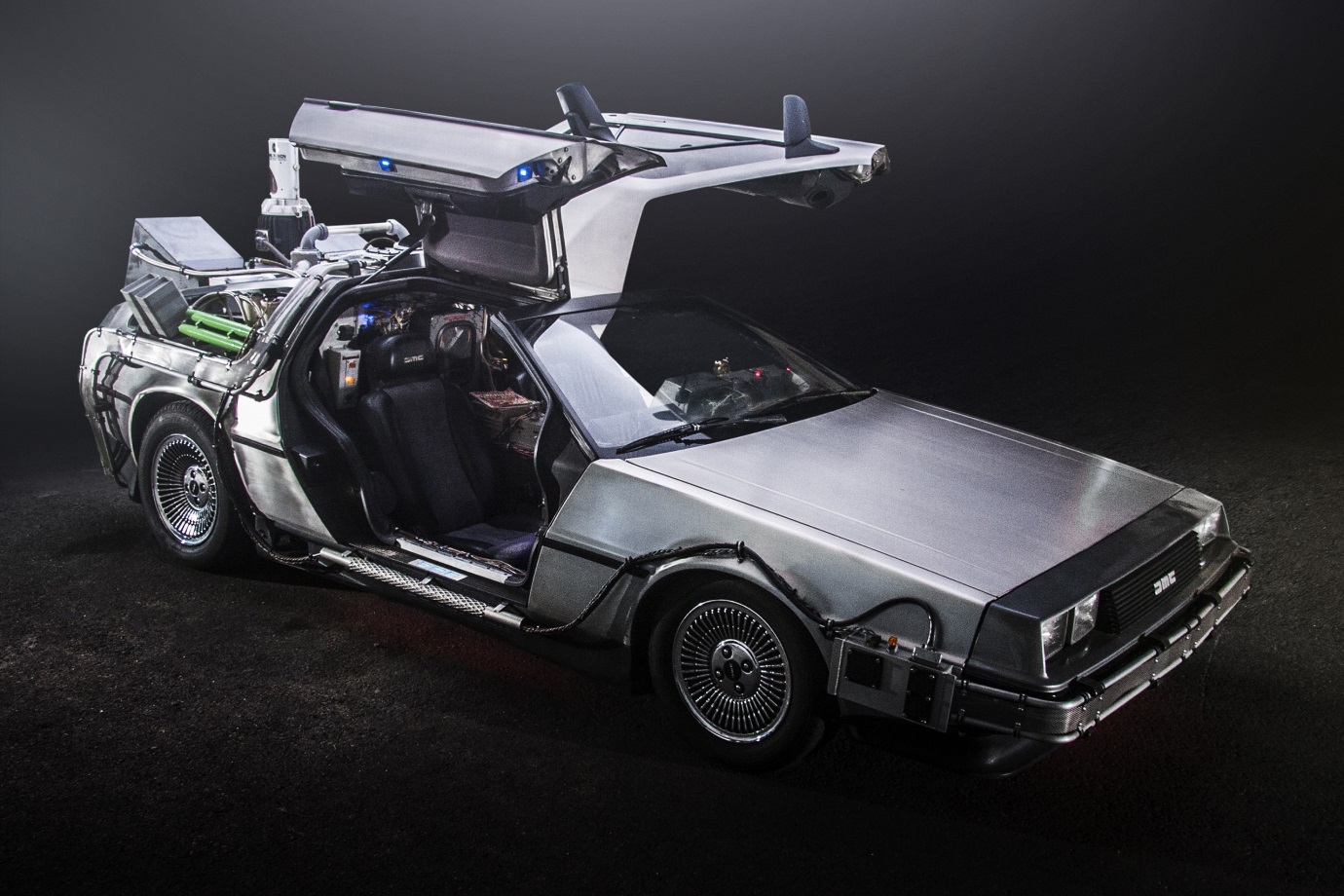Marty: “Wait a minute. Wait a minute. Doc, uh… Are you telling me that you built a time machine… out of a DeLorean?”
Doc: “Yes, the way I see it, if you’re gonna build a time machine into a car, why not do it with some style?
Unless you’ve been trapped in an alternative time-stream you can’t have helped but notice that today (21 October) is Back to the Future Day. Yes, we have finally arrived at the date in the far-distant future to which Doc Brown and Marty McFly travel in the hit 1989 movie, Back to the Future Part II.

Doc and Marty might have been a little disappointed by the real 21 October 2015. We aren’t all zooming around in flying cars, lawyers have yet to be abolished and the police are even threatening to arrest anyone found using a hoverboard in public. And though Doc Brown invented his time-travelling DeLorean back in 1985, the prospect of real life time travel seems like a distant prospect.

Of course, in a way we are all time-travellers. I was born two months after Doc and Marty departed for 2015 and have been on a thirty year journey through time ever since, at a rate of exactly one year per year.
Admittedly just waiting for time to pass isn’t a very satisfactory mode of time travel, so can we do any better?
The laws of physics give a resounding yes, at least if we’re talking about time travel into the future.
In 1905, Albert Einstein overturned the familiar concepts of space and time with his special theory of relativity. According to relativity, time doesn’t tick by at the same rate for everyone; it depends on your relative speed.
An accurate clock taken on a round the world plane journey will show a slightly earlier time than one left on the ground. This effect was first measured by Joseph Hafele and Richard Keating in 1971, who took atomic clocks on two round the world trips by commercial airliner, measuring shifts of around 100 billionths of a second.
Though this time-warping effect is tiny at everyday speeds, it becomes larger the closer you get to the speed of light.
If Doc and Marty had used the DeLorean to go on a journey into space at 99.94% the speed of light for a year (according to their on-board clock) then when they returned, 30 years would have gone by on Earth and they’d have found themselves in 2015, all thanks to special relativity.
In fact, some real-life machines can do even better.
Protons whizz around CERN’s Large Hadron Collider at 99.9999991% of the speed of light, often spending around 8 hours circling the 27km ring.
At these enormous speeds, an 8 hour shift worked by an engineer in the control centre pass in just under four seconds for the protons. The LHC is a time machine that sends protons into the future!
In fact, they could have made the 30 year journey from 1985 to 2015 in just one and a half days.

If the idea of whizzing around a particle accelerator makes you feel queasy, then there is another way to get back to the future.
This November is the 100th anniversary of the theory that Einstein regarded as the ‘most valuable’ of his life: the general theory of relativity. General relativity explains the force of gravity as due to the way matter and energy warp space and time and tells us that time passes more slowly in a gravitational field.
So if you want to travel into the future you’re going to need a strong gravitational field. Once again, general relativity can help us out.
One of the most exciting consequences of Einstein’s theory is the possibility of regions of space where matter is so dense, that nothing, not even light can escape – a black hole. If you approached the event horizon of a black hole – the point of no return – every tick of your watch would correspond to a longer and longer period of time in the external universe. So if Doc and Marty took the DeLorean into orbit around a black hole, they could travel into the future.

But once they got to the future, could they ever get home again? Here the science is less clear, but again general relativity provides scientists with the tools needed to tackle the problem of backward time travel.
Fittingly, it was science fiction that inspired the first scientific investigations of backward time travel. In the 1980s, the famous astronomer Carl Sagan asked his friend, the theoretical physicist Kip Thorne, to help him find a scientifically plausible way for the characters in a science fiction novel he was writing to travel instantaneously from the Earth to the centre of the galaxy.
After examining the equations he derived from general relativity, Thorne realised that it could be possible to create a tunnel between two distant points in space, or even in time; a wormhole. At least in theory, a wormhole could be used to travel from the present into the past, even if building one in practice might prove to be impossible.
Of course, backwards in time travel opens the possibilities of all sorts of nasty paradoxes, like when Marty accidentally prevents his father and mother from getting together, meaning that he would never have been born and therefore have been able to travel back in time in the first place.
Stephen Hawking took the idea seriously enough to propose the ‘chronology protection conjecture’ – that the laws of physic somehow conspire to prevent backward time travel. Let’s hope he’s right, or as Doc Brown said, it could ‘unravel the very fabric of the space time continuum and destroy the entire universe’. Great Scott!
Discover more about black holes, space and time in Einstein’s Legacy, a small exhibition marking the centenary of the general theory of relativity, which opens at the Science Museum on 25 November 2015.